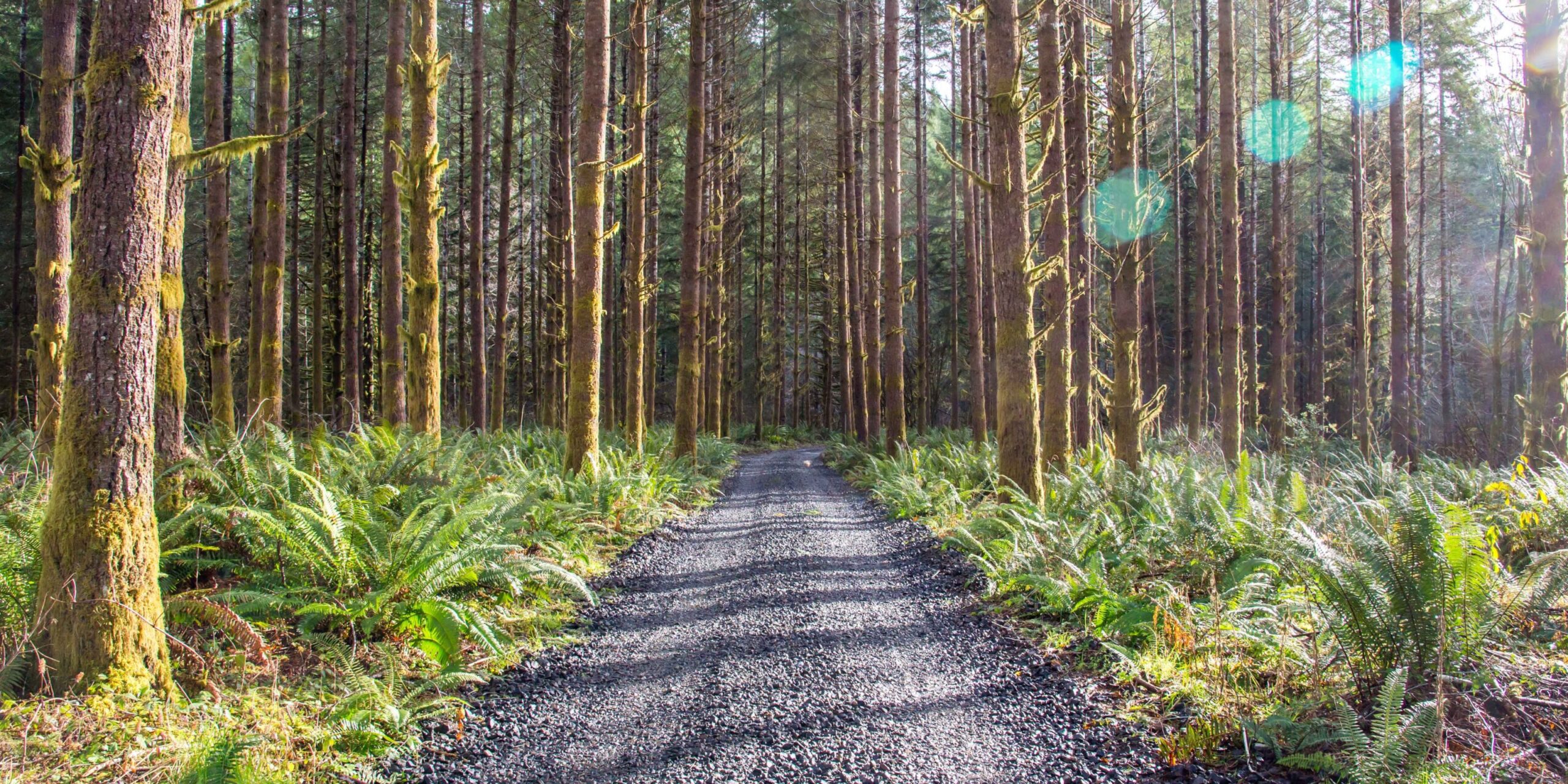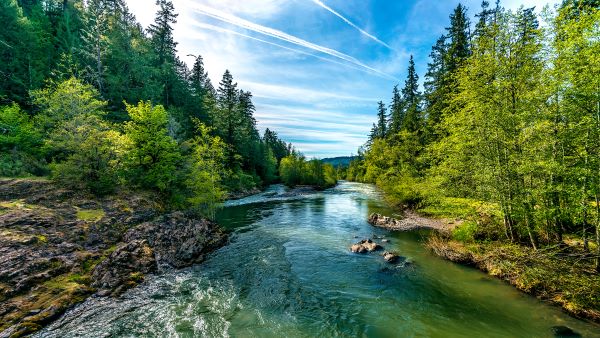
Work. Play. Renew.
How Do Forests Keep Water Clean?
Forests are a vital link in our planet’s ecosystem. While plenty of people know how trees help keep our air breathable, many people don’t realize they also keep our water drinkable. Our planet might be 71 percent water, but only 0.5 percent of that is consumable freshwater.
So, how do forests help keep water clean? Through their role in the water cycle and their impact on watersheds, forests work hard to keep that tiny fraction of cool, clean water available. If you’re curious to know more, here’s how it works.
Water and Forests: How They Work Together

The Basics of the Water Cycle
You’ve probably heard of the water cycle before, but if it’s been a minute since middle school science class, let us give you a refresher. “Water cycle” is the term used to describe how water on earth moves around the planet. It encompasses everything from water evaporating into the air, condensing into clouds, falling back down to earth as rain, then running off into rivers in streams, only to later evaporate and start the process all over again. When the cycle takes place in and around a forest, there are some notable effects.
How Forests Impact the Cycle
Forests influence the water cycle in two major ways: controlling evaporation and filtering watersheds.
First, let’s talk about evaporation. When a tree absorbs water from the ground through its root system, it’s able to store and then slowly release that water through the process of transpiration. This controls the amount of water being released back into the atmosphere, which in turn controls the amount of precipitation in the area.
Second, at the ground level, forests can help absorb and moderate the speed at which water travels through watersheds. They also reduce flooding brought about by storms, helping to block and slow down the extra runoff. Even though these watersheds provide large portions of our population with cool, clean water, many people aren’t aware of how they work.
Expanding On Watersheds
What Exactly Is a Watershed?
To put it simply, a watershed is an area of land that water travels across before reaching a larger body of water. From a watershed, rainwater can flow into a creek, stream, river, or lake, potentially ending up in an outflow point like the ocean. Along the way, water can pick up all kinds of contaminants and sediment. When a watershed runs through a forest, though, the trees provide a number of benefits.
How Forested Watersheds Help Us
Forested watersheds are vitally important in keeping cool, clean water flowing through the water cycle. One of their major functions is reducing sedimentation—that is, the process in which soil and other particulates get swept into water as it rushes through the earth. Since the extensive network of roots helps hold earth in place and slow down the flow of water, erosion is slowed and sediment doesn’t end up causing harm to any humans or aquatic life.
In addition to sediment, forested watersheds also filter out nutrients and pollutants that might find their way into water as it circulates. Trees and heavy vegetation act like a natural sponge, pulling them from the water and preventing them from continuing on.
Finally, forest watersheds also reduce the ultimate cost of water treatment. Since they do so much work to clean and filter it as it passes through, the towns and cities that depend on them don’t have to invest as much in water treatment infrastructure.
Risks Posed to Forest Watersheds
Climate Change
While climate change doesn’t have an immediate effect on forest watersheds, its prolonged effects impact them in a variety of ways. It can change the precipitation patterns, throwing off the established rhythm of the water cycle. Extreme weather events can cause flooding and put stress on the cycle. Drier periods can affect the distribution and availability of cool, clean water. Those same dry periods also put forests at higher risks of fire, threatening the existence of the forest watershed itself.
Changing temperatures can also impact the local ecosystem, causing local wildlife to move out or be pushed out by other species. All of these things can have an impact on the quality and availability of the water provided by the watershed.
Did You Know?
Oregon’s timber industry and conservation groups believe in the importance of cool, clean water in our forests. That’s why they came together in 2020 to create the Private Forest Accord (PFA). Under the PFA, these groups reached an unprecedented agreement on the most effective ways to improve protections for the aquatic habitat needed by native fish and amphibians. These changes provide important safeguards for fisheries and clean water while also securing certainty for forest landowners and economic stability for rural Oregon communities. That’s a win-win for Oregon.
How You Can Help
By now you know how important forests are to keeping cool, clean water flowing, but are you wondering how can you help? If you’re looking for a way to get involved, there are plenty of ways you can take action. At Oregon Forests Forever, we work hard to keep the community engaged and invested in forest preservation. Join us in doing such important work for the trees and for our communities.
[/et_pb_text][et_pb_code _builder_version=”4.19.2″ _module_preset=”default” hover_enabled=”0″ sticky_enabled=”0″][/et_pb_code][/et_pb_column][/et_pb_row][/et_pb_section]